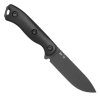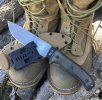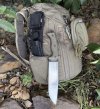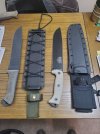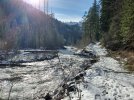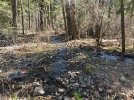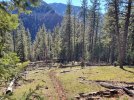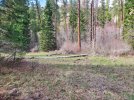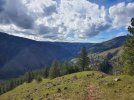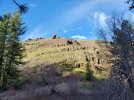Andersonbushcraft
Gold Member
- Joined
- Jun 14, 2019
- Messages
- 110
Hey all,
I saw a knife today that was described as a backpacking knife that would not fit what I would expect a backpacking knife to be, so I've been trying to discern exactly what constitutes a backpacking knife. I'm curious what the consensus is, so I thought up a few questions:
1) What are the main uses of a backpacking knife?
2) What size should a backpacking knife be?
3) What is the primary carry method of a backpacking knife?
I've seen a lot of small hunting style knives described as backpacking knives suited for camp chores, but the disperse camper in me thinks of camp chores as processing firewood, setting up shelter, food prep, and potentially ground clearing.
When I think of a knife to take backpacking. I think of something like a chopper.
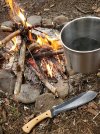
When I'm out disperse camping, I normally come across trails overgrown with thorny brush, thistle, or briars and tend to need to do some minor trail clearing to pass through. Sometimes small trees die, fall, and block the trail and have to be cut back to clear the trail, so again a large knife works great.
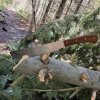
Then processing smaller firewood for a night takes a big knife or a hatchet. Especially when everything is soaked and you have to split wood to get to the dry center.

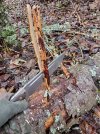
When you're only collecting enough wood to make a warming fire on a cold trip or to stop for lunch, you can stick with the smaller dead branches, and a big knife makes collecting them go fast and easy.
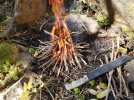
Machetes also make a great backpacking knife in brushier areas or in early spring when things start growing like crazy, but it's still cold at night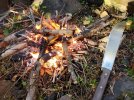
On ultralight or survival practice trips, the knife has to be used to set up frames for tarp shelters or build entire shelters out of dead wood, which a big knife makes easy.
Now for my uses a backpacking knife needs to he a big knife, but I'd like to hear what others consider to be a good backpacking knife, what they use it for, and how big it should be.
Thanks!
I saw a knife today that was described as a backpacking knife that would not fit what I would expect a backpacking knife to be, so I've been trying to discern exactly what constitutes a backpacking knife. I'm curious what the consensus is, so I thought up a few questions:
1) What are the main uses of a backpacking knife?
2) What size should a backpacking knife be?
3) What is the primary carry method of a backpacking knife?
I've seen a lot of small hunting style knives described as backpacking knives suited for camp chores, but the disperse camper in me thinks of camp chores as processing firewood, setting up shelter, food prep, and potentially ground clearing.
When I think of a knife to take backpacking. I think of something like a chopper.

When I'm out disperse camping, I normally come across trails overgrown with thorny brush, thistle, or briars and tend to need to do some minor trail clearing to pass through. Sometimes small trees die, fall, and block the trail and have to be cut back to clear the trail, so again a large knife works great.

Then processing smaller firewood for a night takes a big knife or a hatchet. Especially when everything is soaked and you have to split wood to get to the dry center.


When you're only collecting enough wood to make a warming fire on a cold trip or to stop for lunch, you can stick with the smaller dead branches, and a big knife makes collecting them go fast and easy.

Machetes also make a great backpacking knife in brushier areas or in early spring when things start growing like crazy, but it's still cold at night

On ultralight or survival practice trips, the knife has to be used to set up frames for tarp shelters or build entire shelters out of dead wood, which a big knife makes easy.
Now for my uses a backpacking knife needs to he a big knife, but I'd like to hear what others consider to be a good backpacking knife, what they use it for, and how big it should be.
Thanks!

